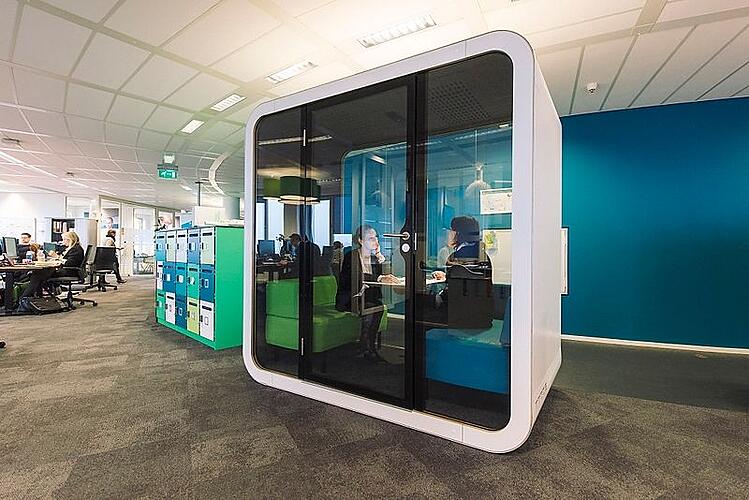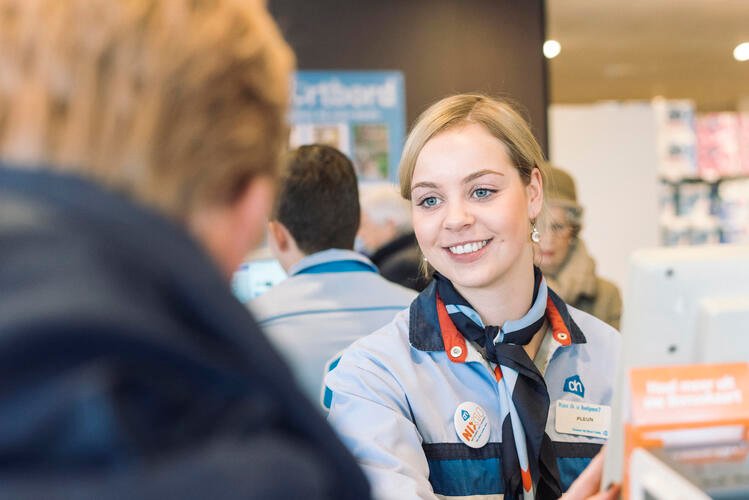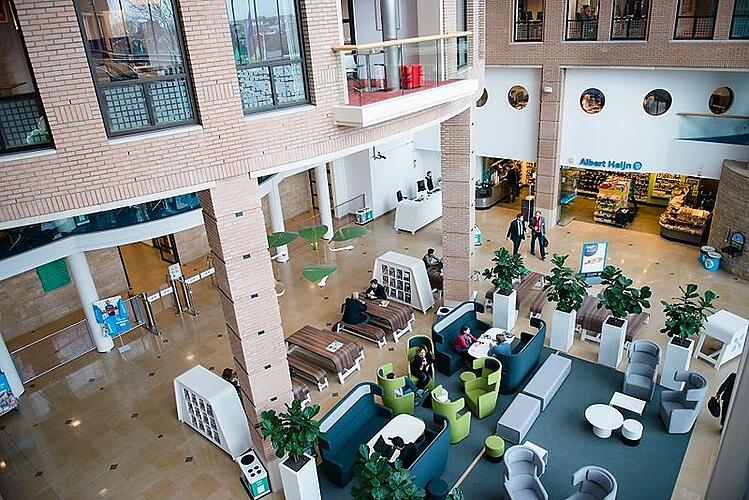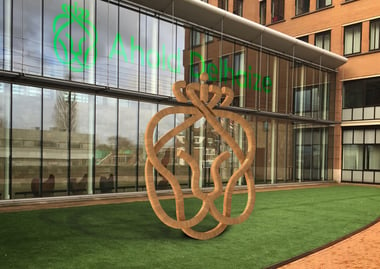Ahold Delhaize - Company-Wide Engagement Survey Customer Story
Getting On The Same Page With Engagement
Ahold and Delhaize merged in 2016, to form Ahold Delhaize, and became one of the world’s largest food retail groups, and a leader in both supermarkets and eCommerce. The leaders of the new company wanted a company-wide overview of employee engagement, but the complexity of their organization—being a family of 20 local brands serving 54 million customers each week in Europe, the United States, and Indonesia through nearly 7,000 stores with more than 380,000 employees—created significant challenges. To get a single enterprise-wide view of engagement, the company needed some level of global consistency in their survey program, while also delivering surveys customized to each unique brand and in a number of different languages.
Prior to merging, Ahold and Delhaize had each worked with a different survey vendor. After the merger, company leaders wanted to bring all of their employee engagement data together, and began the process to establish a common global strategy, process and baseline. The HR team initiated the RFP process in September 2016, and after considering several vendors, partnered with Perceptyx. In April 2017, the HR teams across the Ahold Delhaize brands deployed the new survey, and within less than a year of the merger, Ahold Delhaize had the baseline they needed to start addressing engagement across the enterprise.
In the years since the initial company-wide survey, HR has been working with company leadership to think strategically about engagement, and has focused on connecting the dots between data points to reveal a story that goes beyond just the score, and improving and refining the survey process. The process to improve has been incremental out of necessity; the challenges of aligning all local brands —and getting all the data from multiple systems into the same format —are formidable. But the pace the company adopted has served it well; each year it is building on the Ahold Delhaize strategy of driving great local brands through scale.
Addressing Barriers To Standardizing Data
According to Kathy Randall, Culture and Engagement Director at Ahold Delhaize, the biggest barrier to getting an overall view of engagement in the company was scale and complexity. “Both organizations had grown through acquisition over the years, so there were a lot of different systems in use for data,” said Randall. “After the merger, in some countries, Ahold Delhaize had three different systems that had to be merged. Some brands or locations had outdated systems, and the standardization of data was also an issue. Some stores were identified by number, some by address, and yet others by zip code, and some systems had no hierarchy. It would take seven months to pull everything together from all the sites and systems.”
Another challenge had been resourcing. Smaller brands within the company not only have different systems—they have different people pulling the data. For one brand it might be HRIS; for another, it could be payroll. Randall said, “You know the data’s in there, but to get to it, first you have to track down the person who can access it.”
This complexity of systems and data sets presented a big challenge for programming the survey. “It can’t be programmed in one consistent way due to the data,” said Randall. “One brand may use a different data point than another, so you have to use another point for branching questions. How do we make sure the right definitions show up for different position levels? It gets very complex quickly.”
Randall said that the partnership with Perceptyx was crucial to collecting and integrating the data from the company’s disparate systems and files: “The flexibility of support we got in getting all these different data files together and helping us figure out how to cobble together a hierarchy—we really appreciated it; we knew our data was a barrier. I don’t know of any other vendor who would have helped us versus requiring us to provide it.
We would not have been able to meet our strategic engagement objectives and a global survey with other vendors.”

Listening to Secure Buy-In Across The Organization
Another barrier to the success of the enterprise-wide survey was the perceived lack of confidentiality; employees worried they could be identified through their sign-in. Shanna Daugherty, Global Manager of Associate Development for Ahold Delhaize, said she used several different strategies to secure buy-in from the various brands within the company.
The most important of these was sharing the rationale for the changes in the way surveys would be conducted. “We shared the long-term strategy, reminding our colleagues that it’s about engagement, not just the annual survey. And the only way we can track and increase engagement is to start collecting data about the journey of our associates,” Daugherty said.
Another strategy was downplaying the change. “We said, ‘We know change is scary, but we shouldn’t over-focus on the change and make it into something bigger than it is. Really all it comes down to is you take the survey in a different way this year’,” said Daugherty. “Some brands got really creative; one brand put together mailers and sent them to all associates’ homes; they also did videos on their internal TV system talking about the new, different way to take the survey, pitching it as ‘Here’s an easier way to take the survey.’ We were also completely transparent with associates— Our associates really appreciated it and our brand leaders received positive feedback on the transparency.”
The team also put together a Q&A list for HR to use with leaders and salaried store managers, to make sure people understood the reasons for the changes in the survey, and that they didn’t get the pushback they expected as a result.
Another approach was to use the brand or location’s prior challenges to support the logic of making the change. Daugherty held initial conversations with different brands, asking a lot of questions around what was preventing the change and answering questions HR and others had about the change. “We really started making the conversation about overcoming the challenges, and eventually our teams came on board, and in the end, they’re much happier with the data they’re getting,” said Daugherty.
“I give credit to Perceptyx—our project manager got on calls with us, really diving into conversations deeply to get them there,” Daugherty said.
Personalizing To Each Unique Brand
In keeping with the company’s strategy of driving great local brands through scale, it was important to have the flexibility to personalize the survey to each brand for inclusiveness. Although the critical thing was to be able to use one survey to report data globally, the team wanted associates to feel like they were taking a Food Lion survey, for example, rather than one from Ahold Delhaize.
“Step one is we want every associate to see their brand logo when they take the survey. Step two is asking the 30 global questions that we want all associates to answer,” said Kathy Randall. “Each brand can then ask additional questions to drive their brand strategy—or their division, department, or level of the organization. What’s going to drive engagement based on your group? The flexibility is nice; our businesses appreciate it. The challenge is the complexity with programming when you don’t have one specific set of data.”
Randall said brands are given a lot of latitude for the questions, but the team has discovered some capability gaps, which they’re working to close. “We have some who are asking about what they want to know, what they are curious about, rather than actionable things that are strategically important. We are going to spend a couple of years building that competency.” While their original goal was just to have the survey uniquely branded for each brand, it has expanded significantly. But they knew that was the right place to begin for their company.

Evolving Toward Long-Term Goals
According to Shanna Daugherty, last year the team’s focus was the experience of taking the survey—what does it look like, and does it have even more local branding or customization? Going into 2020, the focus on enhancing the experience for associates will continue, but the team will also be exploring issues HR business partners related to how to look at the data differently and determine the different reports that might be useful. “This year we’re also focusing on the broader experience and getting new features up and running, including the Perceptyx OnDemand system,” she said.
Kathy Randall is starting the conversation about continuous life cycle surveying. “Data is a challenge, but it’s getting better. We’re working with local brands to get cleaner data to support our strategy and the direction we want to go. One big win from our last survey is that it was the first time we were able to attribute data to all 380,000 of our associates, yielding much richer data.”
“Our ultimate goal,” continued Randall, “is a one-stop shop and seamless delivery for our continuous listening program, perhaps through an app for employees. They open the app and the dashboard is there. If I’m an employee and get promoted, I can go to the dashboard and see which surveys are available to me; it offers opportunities for self-engagement.”

Fresh Perspectives to Make An Impact
“The first step is looking at the data and telling a story with it that resonates with driving our business strategy,” said Randall. “Previous survey reports were data dumps of 120 pages; our first year was similar to that. The second year, we were able to cut that down to 30 pages. We looked at the data differently, asked ‘What is the strategy we’re trying to drive and why?’ and ‘How do we use that data to show where we are from a people perspective?’”
“One of the pillars in our strategy around best talent is culture. We leveraged the data to tell the story about things we say we need to elevate and asked, ‘Are there potential strengths that are overused, causing us to actually be less successful in driving the culture we want?’ This isn’t about being the best at everything—it’s about being good enough in things that are foundational, and best in class in those areas where that can drive our business strategy.”
“We’ve started changing those conversations and it’s been very well received,” Randall continued. “This year we’ve had better data to pull in business metrics from our stores to learn what is driving the customer experience. We’re comparing engagement to key business metrics in order to understand what is driving customer loyalty and revenue, and work towards predictive capabilities. For now, the focus is on how to have a different conversation about this data. Most importantly, we’re now getting more support to get more data and start building OnDemand and lifecycle surveys into our listening program.
Want to learn more?

About Ahold Delhaize
The roots of Ahold Delhaize go back to 1867, when the Delhaize brothers opened a store in Charleroi, Belgium, and to 1887, when Albert Heijn and his wife opened a small grocery in Oostzaan, the Netherlands, which eventually grew into Ahold.
When Ahold and Delhaize merged in 2016, the company became one of the world’s largest food retail groups and a leader in both supermarkets and eCommerce. Its family of local brands serves 54 million customers each week in Europe, the United States, and Indonesia through nearly 7,000 stores. Brands in the Ahold Delhaize family include Food Lion, Giant, Hannaford, Peapod, Stop & Shop, and Delhaize.
Headquarters: Zandaam, the Netherlands
Industry: Grocery & Specialty Retail
Number of Employees: 380,000